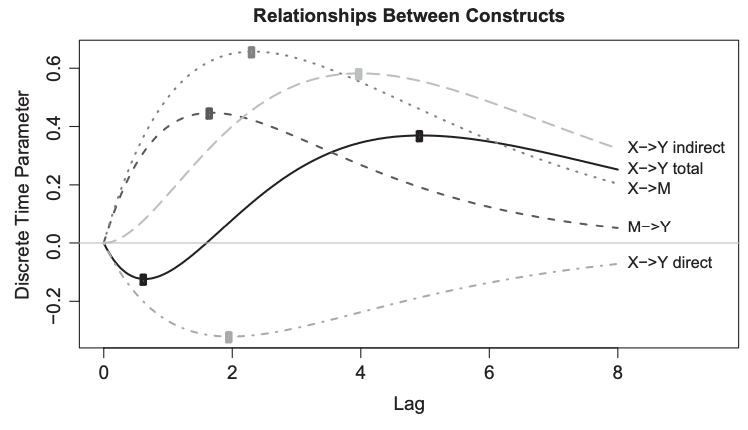Mediation models based on cross-sectional data can produce unexpected estimates, so much so that making longitudinal or causal inferences is inadvisable. Even longitudinal mediation models produce estimates are specific to the lag between observations, leading to debate over lag selection. Using continuous time models, one can estimate lag-independent parameters.
Abstract
Mediation is one concept that has shaped numerous theories. The list of problems associated with mediation models, however, has been growing. Mediation models based on cross-sectional data can produce unexpected estimates, so much so that making longitudinal or causal inferences is inadvisable. Even longitudinal mediation models have faults, as parameter estimates produced by these models are specific to the lag between observations, leading to much debate over appropriate lag selection. Using continuous time models (CTMs) rather than commonly employed discrete time models, one can estimate lag-independent parameters. We demonstrate methodology that allows for continuous time mediation analyses, with attention to concepts such as indirect and direct effects, partial mediation, the effect of lag, and the lags at which relations become maximal. A simulation compares common longitudinal mediation methods with CTMs. Reanalysis of a published covariance matrix demonstrates that CTMs can be fit to data used in longitudinal mediation studies.
Code and Other Content
Code here
Citation
Deboeck, P. R. & Preacher, K. J. (2015). No Need to be Discrete: A Method for Continuous Time Mediation Analysis. Structural Equation Modeling, 23, 61–75.
